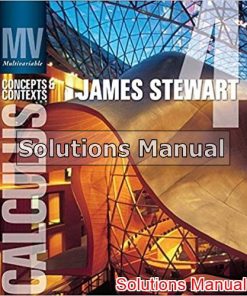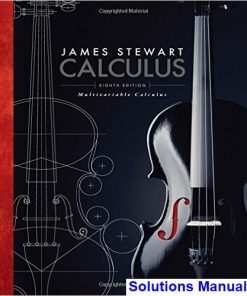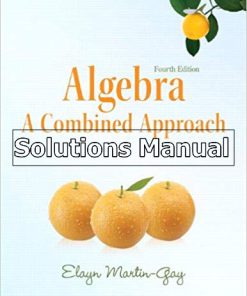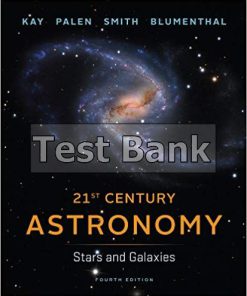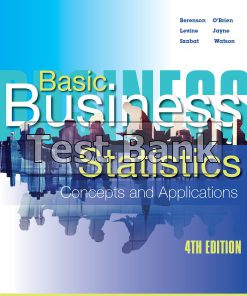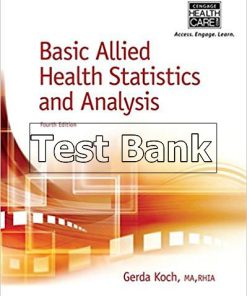Calculus Concepts and Contexts 4th Edition Stewart Solutions Manual
$26.50$50.00 (-47%)
Calculus Concepts and Contexts 4th Edition Stewart Solutions Manual.
You may also like
-
$26.50
$50.00 -
$26.50
$50.00
Instant download Calculus Concepts and Contexts 4th Edition Stewart Solutions Manual pdf docx epub after payment.
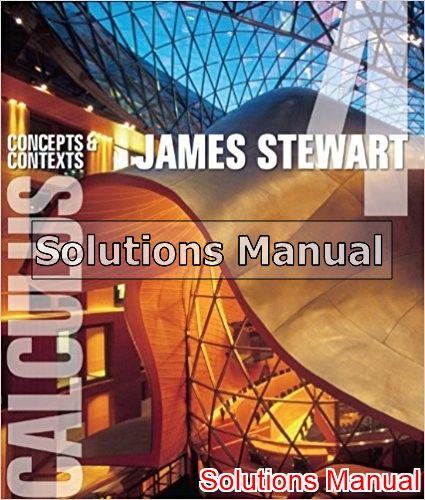
Product details:
- ISBN-10 : 0495557420
- ISBN-13 : 978-0495557425
- Author: James Stewart (Author)
Stewart’s CALCULUS: CONCEPTS AND CONTEXTS, FOURTH EDITION offers a streamlined approach to teaching calculus, focusing on major concepts and supporting those with precise definitions, patient explanations, and carefully graded problems. CALCULUS: CONCEPTS AND CONTEXTS is highly regarded because this text offers a balance of theory and conceptual work to satisfy more progressive programs as well as those who are more comfortable teaching in a more traditional fashion. Each title is just one component in a comprehensive calculus course program that carefully integrates and coordinates print, media, and technology products for successful teaching and learning.
Table of contents:
- Chapter 1: Functions and Models
- 1.1: Four Ways to Represent a Function (67)
- 1.2: Mathematical Models: A Catalog of Essential Functions (31)
- 1.3: New Functions from Old Functions (61)
- 1.4: Graphing Calculators and Computers (30)
- 1.5: Exponential Functions (40)
- 1.6: Inverse Functions and Logarithms (62)
- 1.7: Parametric Curves (37)
- 1: Review (1)
- 1: True False Quiz (12)
- Chapter 2: Limits and Derivatives
- 2.1: The Tangent and Velocity Problems (21)
- 2.2: The Limit of a Function (42)
- 2.3: Calculating Limits Using Limit Laws (53)
- 2.4: Continuity (41)
- 2.5: Limits Involving Infinity (54)
- 2.6: Derivatives and Rates of Change (61)
- 2.7: The Derivative as a Function (56)
- 2.8: What does f’ Say about f? (38)
- 2: Review
- 2: True False Quiz (18)
- Chapter 3: Differentiation Rules
- 3.1: Derivatives of Polynomials and Exponential Functions (66)
- 3.2: The Product and Quotient Rules (59)
- 3.3: Derivatives of Trigonometric Functions (49)
- 3.4: The Chain Rule (81)
- 3.5: Implicit Differentiation (53)
- 3.6: Inverse Trigonometric Functions and their Derivatives (16)
- 3.7: Derivatives of Logarithmic Functions (56)
- 3.8: Rates of Change in the Natural and Social Sciences (42)
- 3.9: Linear Approximations and Differentials (41)
- 3: Review
- 3: True False Quiz (12)
- Chapter 4: Applications of Differentiation
- 4.1: Related Rates (63)
- 4.2: Maximum and Minimum Values (67)
- 4.3: Derivatives and the Shapes of Curves (91)
- 4.4: Graphing with Calculus and Calculators (29)
- 4.5: Indeterminate Forms and l’Hospital’s rule (75)
- 4.6: Optimization Problems (72)
- 4.7: Newton’s Method (48)
- 4.8: Antiderivatives (57)
- 4: Review
- 4: True False Quiz (20)
- Chapter 5: Integrals
- 5.1: Areas and Distances (36)
- 5.2: The Definite Integral (78)
- 5.3: Evaluating Definite Integrals (88)
- 5.4: The Fundamental Theorem of Calculus (37)
- 5.5: The Substitution Rule (86)
- 5.6: Integration by Parts (62)
- 5.7: Additional Techniques of Integration (72)
- 5.8: Integration Using Tables and Computer Algebra Systems (44)
- 5.9: Approximate Integration (53)
- 5.10: Improper Integrals (74)
- 5: Review
- 5: True False Quiz (23)
- Chapter 6: Applications of Integration
- 6.1: More about Areas (41)
- 6.2: Volumes (69)
- 6.3: Volumes by Cylindrical Shells (49)
- 6.4: Arc Length (29)
- 6.5: Average Value of a Function (32)
- 6.6: Applications to Physics and Engineering (77)
- 6.7: Applications to Economics and Biology (28)
- 6.8: Probability (32)
- 6: Review
- 6: True False Quiz
- Chapter 7: Differential Equations
- 7.1: Modeling with Differential Equations (23)
- 7.2: Direction Fields and Euler’s Method (36)
- 7.3: Separable Equations (51)
- 7.4: Exponential Growth and Decay (42)
- 7.5: The Logistic Equation (21)
- 7.6: Predator-Prey System (23)
- 7: Review
- 7: True False Quiz (5)
- Chapter 8: Infinite Sequences and Series
- 8.1: Sequences (64)
- 8.2: Series (75)
- 8.3: The Integral and Comparison Tests; Estimating Sums (63)
- 8.4: Other Convergence Tests (68)
- 8.5: Power Series (46)
- 8.6: Representations of Functions as Power Series (37)
- 8.7: Taylor and Maclaurin Series (70)
- 8.8: Applications of Taylor Polynomials (40)
- 8: Review
- 8: True False Quiz (19)
- Chapter 9: Vectors and the Geometry of Space
- 9.1: Three-Dimensional Coordinate System (48)
- 9.2: Vectors (49)
- 9.3: The Dot Product (53)
- 9.4: The Cross Product (47)
- 9.5: Equations of Lines and Planes (59)
- 9.6: Functions and Surfaces (32)
- 9.7: Cylindrical and Spherical Coordinates (19)
- 9: Review
- 9: True False Quiz (18)
- Chapter 10: Vector Functions
- 10.1: Vector Functions and Space Curves (35)
- 10.2: Derivatives and Integrals of Vector Functions (47)
- 10.3: Arc Length and Curvature (48)
- 10.4: Motion in Space: Velocity and Acceleration (34)
- 10.5: Parametric Surfaces (41)
- 10: Review
- 10: True False Quiz (12)
- Chapter 11: Partial Derivatives
- 11.1: Functions of Several Variables (44)
- 11.2: Limits and Continuity (38)
- 11.3: Partial Derivatives (77)
- 11.4: Tangent Planes and Linear Approximations (39)
- 11.5: The Chain Rule (51)
- 11.6: Directional Derivatives and the Gradient Vector (56)
- 11.7: Maximum and Minimum Values (53)
- 11.8: Lagrange Multipliers (45)
- 11: Review
- 11: True False Quiz (12)
- Chapter 12: Multiple Integrals
- 12.1: Double Integrals over Rectangles (20)
- 12.2: Iterated Integrals (46)
- 12.3: Double Integrals over General Regions (55)
- 12.4: Double Integrals in Polar Coordinates (40)
- 12.5: Applications of Double Integrals (36)
- 12.6: Surface Area (23)
- 12.7: Triple Integrals (54)
- 12.8: Triple Integrals in Cylindrical and Spherical Coordinates (61)
- 12.9: Change of Variables in Multiple Integrals (32)
- 12: Review
- 12: True False Quiz (8)
- Chapter 13: Vector Calculus
- 13.1: Vector Fields (33)
- 13.2: Line Integrals (48)
- 13.3: The Fundamental Theorem for Line Integrals (36)
- 13.4: Green’s Theorem (35)
- 13.5: Curl and Divergence (40)
- 13.6: Surface Integrals (46)
- 13.7: Stokes’ Theorem (24)
- 13.8: The Divergence Theorem (29)
- 13.9: Summary
- 13: Review
- 13: True False Quiz (8)
- Chapter A: Appendix A
- A.A: Intervals, Inequalities, and Absolute Values (44)
- A.B: Coordinate Geometry (50)
- A.C: Trigonometry (40)
- A.D: Precise Definitions of Limits (24)
- A.E: A Few Proofs
- A.F: Sigma Notation (49)
- A.G: Integration of Rational Functions by Partial Fractions (17)
- A.H: Polar Coordinates (77)
- A.I: Complex Numbers (59)
People also search:
Calculus Concepts and Contexts 4th Edition
Calculus Concepts and Contexts 4th Edition pdf
Calculus Concepts and Contexts
single variable calculus concepts and contexts answers
calculus concepts and contexts bundled w/ webassign

